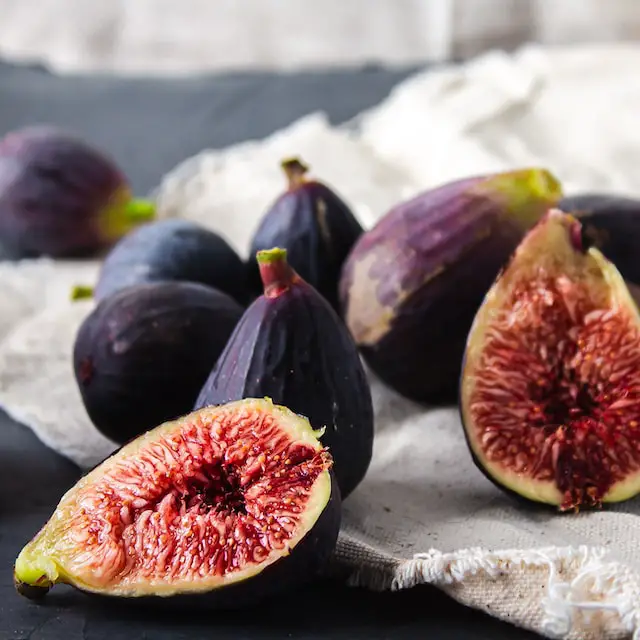
The taste of a ripe fig fresh from the tree is like nothing else – it’s one of the things that got me into growing my own fruit at home. Figs from the grocery store are bland, mealy, and only mildly sweet, in my experience. But fresh-picked figs taste rich and syrupy, with a soft and juicy texture that is nothing like the store-bought ones.
The first season my fig tree had a crop, I was so excited. I picked the first ripe-looking one, but after one taste I realized that it wasn’t ready yet. I learned to bide my time and wait for the perfect time to harvest the figs for the best possible flavor. So, how do you know a fig is fully ripe?
Figs are ready to harvest when they are drooping down from the stem. The skin should look cracked or stretched and slightly translucent. Ripe figs are very soft and juicy, and the neck of the fruit should feel soft when gently squeezed.
There are many things to look for when determining when to pick figs, and trust me, it’s worth getting right. There is a huge difference between a perfectly ripe fig and an almost-ripe fig. Keep reading to learn the signs that a fig is ready to pick, why your figs might not be ripening well, as well as how to harvest and store the fruit.
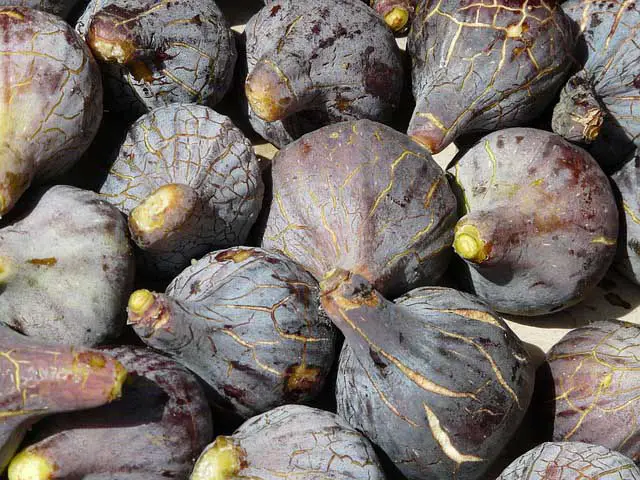
When are figs ready to pick?
Picking at the right time not only makes for bigger, sweeter, more succulent figs, but also the most nutritional benefits. When figs have a chance to ripen fully on the tree, they develop a more complex flavor and texture. They are also a great source of calcium and potassium (and other vitamins and minerals), have high fiber, and contain prebiotics which can improve gut health (source).
Under-ripe figs, like the ones that are picked early in order to be shipped to the grocery store, don’t have the same nutritional content as tree-ripened figs. The longer a fig stays attached to the tree, the more sugars (and other flavor compounds and nutrients) develop.
Picking figs is a bit of a game – if the game is called “Beat the Birds.” It’s a delicate balance between waiting long enough to get the best fig flavor, but not so long that the birds (or other critters) come and take a bite out of the sweet fruit. There’s a narrow window in there, and it may take some practice to time it just right.
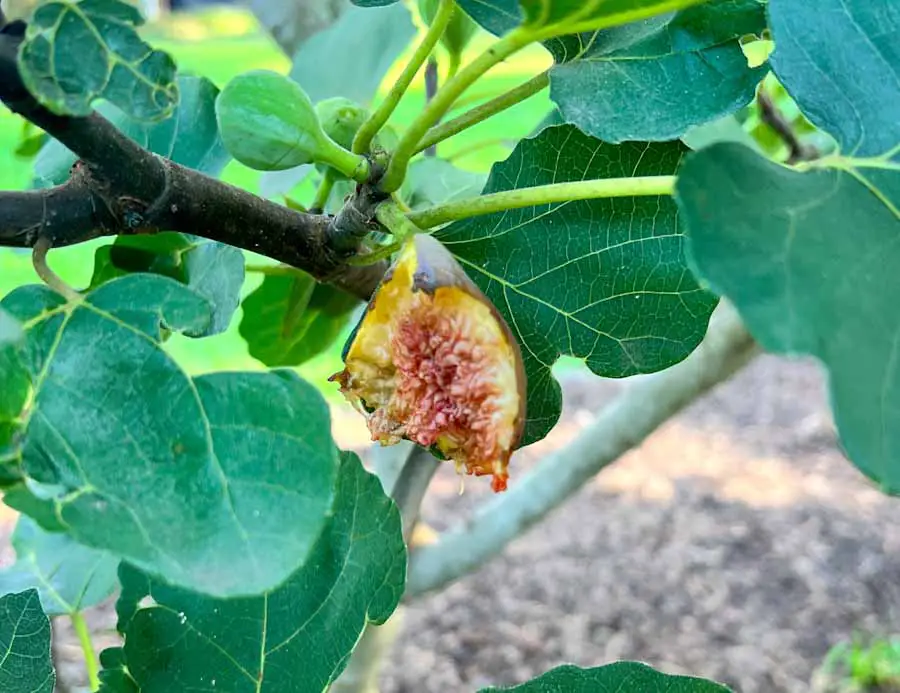
Every fig tree, and every fig cultivar, will be different. Some varieties will taste best when completely squishy, while others may only need to be slightly soft to have full flavor. You also may have a personal preference for the taste slightly more- or less-ripe figs.
Experiment a bit – pick a few figs at different stages and decide what flavor you prefer for that particular variety. Take note of what the ideal fig looks and feels like. Read on to learn what to watch for to determine if it’s the right time to pick.
Signs of a Ripe Fig
- Drooping downward. One of the most important signs that a fig is ripe is that it is drooping down toward the ground, rather than sticking out perpendicular to the branch. The neck of the fruit will bend or fold over. Even if the fig is large, somewhat soft, and deeply colored, but it is still sticking straight out, it’s not ready yet. But it will be soon, so watch closely.
- Soft neck. The other most important thing to watch for (or feel for) is the softness of the neck of the fig. The neck is the narrow part of the fig where it attaches to the stem. Figs ripen from the bottom (the “eye”) to the top. A fig may feel soft when you squeeze the round part at the base, but if the neck is still firm, it’s not ready. Wait until the neck gives a little when you gently squeeze it.
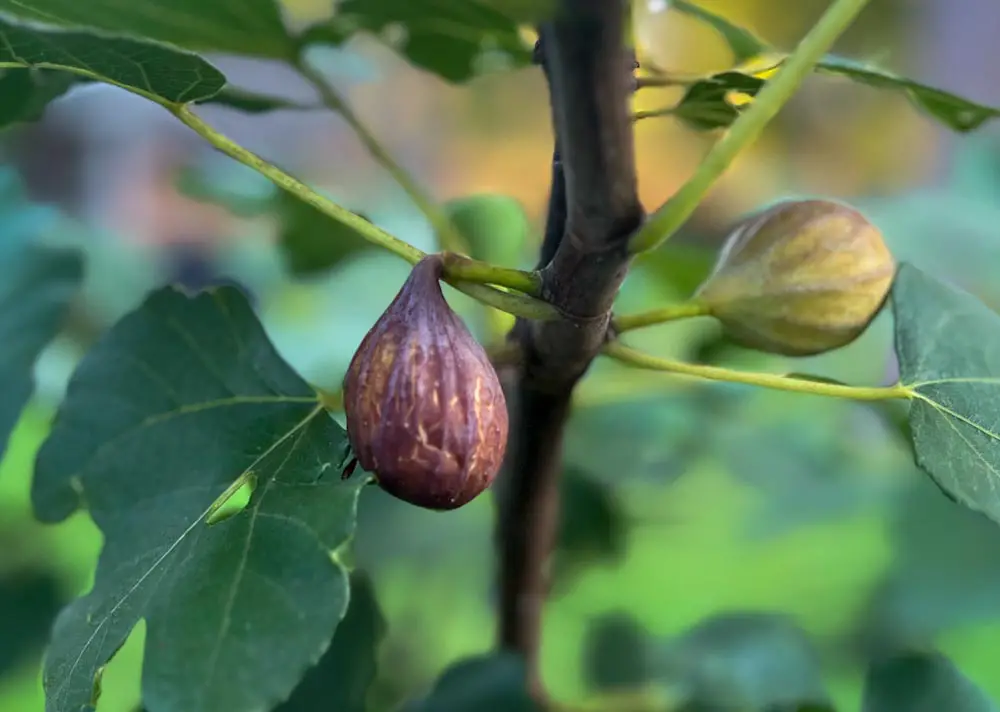
- Size. When a fig is in its final ripening stage, it grows in size quickly. Young figs stay small for a long time before they expand in the last several days of ripening. If you see a fig starting to get larger, then it’s time to keep an eye on it.
- Color. Figs also stay green for a long time before finally deepening to their final color. This color change is pretty obvious in darker figs like ‘Brown Turkey’ or ‘Violette de Bordeaux’. These figs will shift from green to yellowish with streaks of purple, then darken to a deep purplish brown/black (depending on the variety). Color change is less helpful when the final color of the fig is yellow (like ‘LSU Gold’) or green (such as ‘Ischia’). Use color as a helpful indicator, but size and droopiness are more reliable signs of ripeness.
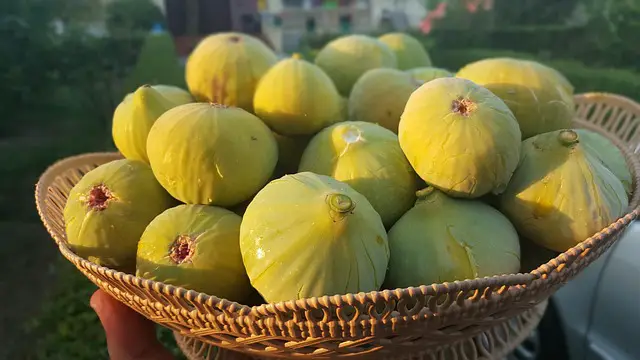
- Cracking, translucent skin. As the fig grows and softens, the skin takes on a stretched, straining appearance. Cracks or splits appear on the fruit, and there may be some wrinkles, especially near the neck. The skin gets thinner and starts to look a little translucent. It’s as if the fig can hardly contain the sweet juiciness inside.
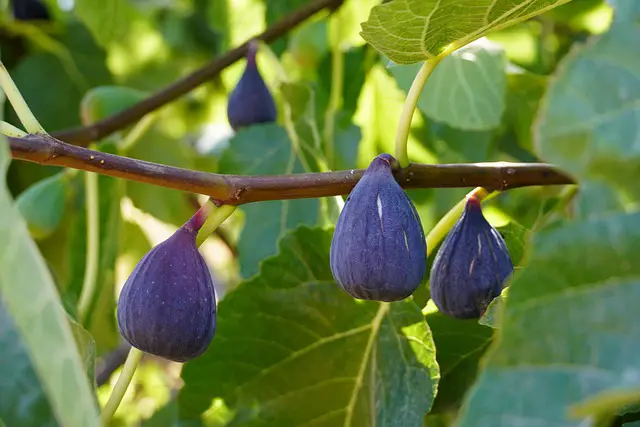
- Softness. As I’ve mentioned, figs become very soft as they ripen. Some fig varieties may need to be almost squishy before they’re picked, while others may have full flavor when they are only slightly soft. Use some trial and error to figure out when the flavor of your figs is best. If the fig over-softens on the tree, however, it will rot much more quickly (or be eaten by birds or bugs before you can pick it).
- Flavor. The flavor of a ripe fig varies from variety to variety, but they all have a rich, fruity, almost syrupy sweetness. A fully ripe fig will be soft and juicy with thin skin. You will sometimes even see a drop of nectar oozing out of the eye at the base of the fig – a sign that it’s just about ready.
Signs of an Under-Ripe Fig
Figs can be deceiving – they may look large, deep in color, and feel soft, but still not quite be ready. Here are some signs that your figs aren’t quite ready yet. Some of these are things you’ll only notice once you cut into the fig, but you can use that info to help you decide when to pick the rest of the fruit.
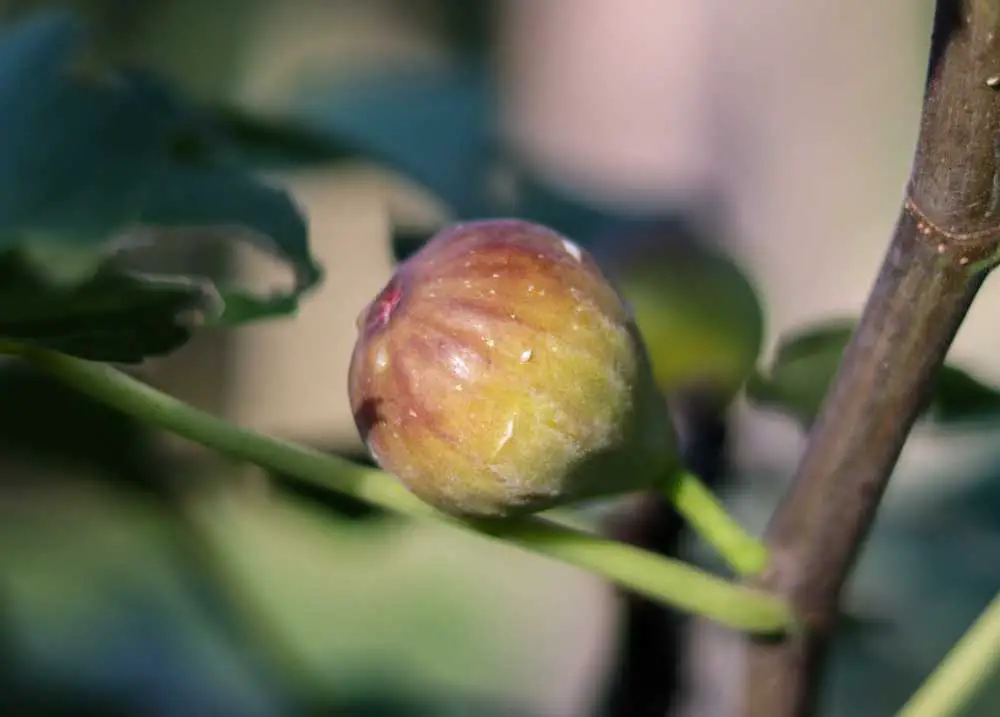
- Perpendicular or stiff stem. An unripe fig will be sticking straight out from the branch. The neck will be firm and unwrinkled. As it ripens, the fig will bend down to the ground until it is fully drooping.
- Firm. A gentle squeeze will tell you if the fig is fully soft from top to bottom, or if there is still some firmness.
- Small and green. Like I mentioned above, color is not a surefire way to tell if a fig is ripe, especially since some figs are green or greenish-yellow when fully mature. But for darker-colored varieties, if the fig is still mostly green (especially if it is still small), it probably isn’t ready yet.
- Milky sap. Before a fig is fully ripe, it will leave a sticky, milky sap when it’s cut from the stem. This sap can irritate the skin, so be sure to wear gloves when picking figs. Once the fig is fully ripe, there should be no white sap left on the cut stem.
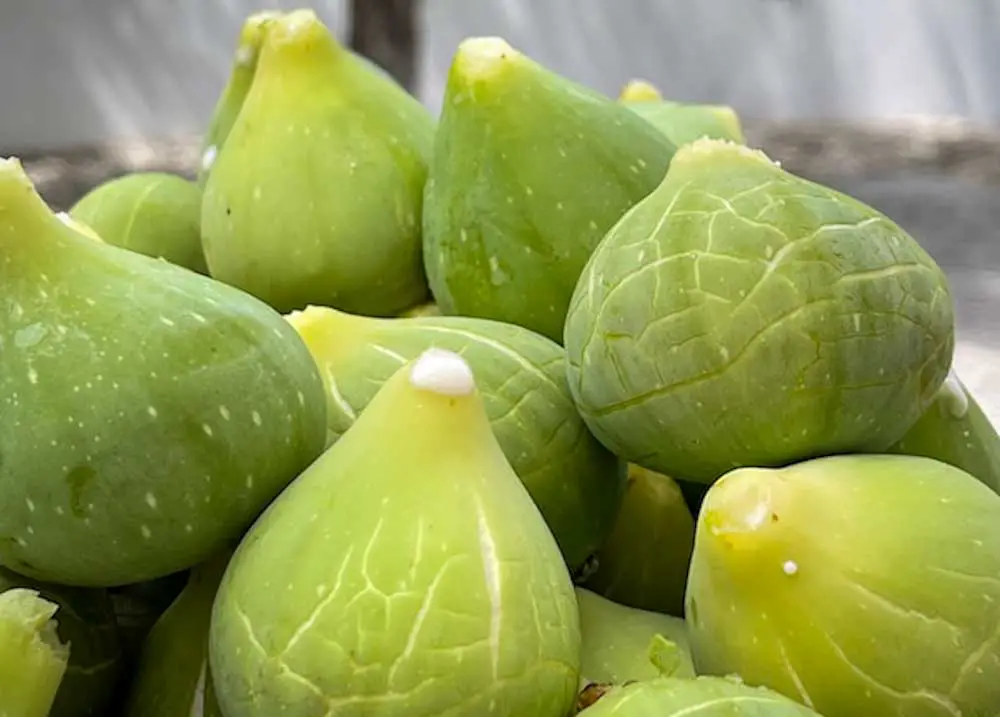
- Thick, white pith. When a ripe fig is cut open, the skin and pith (the light colored area around the inner flesh of the fig) should be thin and yellowish, or should bleed into the color of the flesh. An unripe fig will have a thick, bright white pith that is distinct from the flesh.
- Tough, bitter skin. Under-ripe figs have tougher, more fibrous skin. The skin may have a slight bitter flavor. The skin of ripe figs is thin and easy to bite through, and has an unnoticeable (to me) taste – especially since the flesh will be so sweet at that point.
- Vegetal taste. Figs picked too early have a mineral-y, vegetal flavor. To me, they taste watered-down and a little like an under-ripe melon. Some people describe it as a resiny flavor, or like tree sap (I’ve never tasted tree sap, so I can’t confirm). The texture may be slightly rubbery and fibrous. Very different from the intense sweetness of a fully-ripe fig.
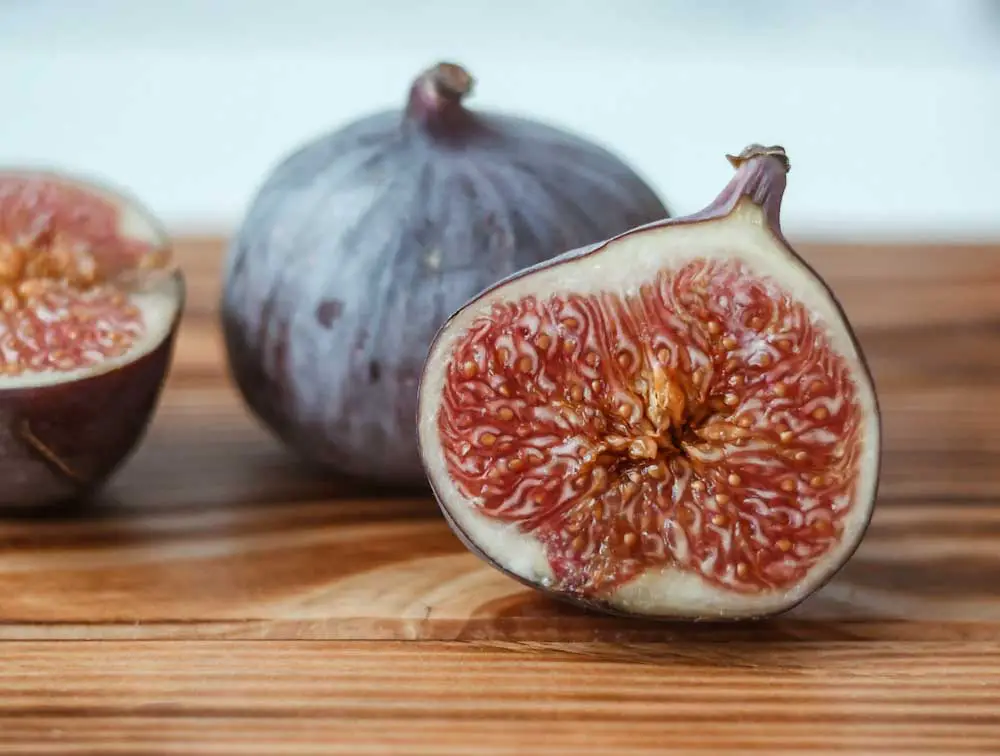
How to Harvest Figs
I recommend wearing gloves when harvesting figs, just in case you encounter some of the irritating white sap, called fig latex. Use pruners or small hand clippers to snip off the fig at the stem. Don’t pull off the fig at the neck – it will cause the fig to rot much more quickly than if you leave it attached to the stem.
A ripe fig should come off the tree readily, even if picked by hand. Handle the figs gently, as they can damage easily. Place them in a single layer in a basket or crate so they don’t get bruised.
Storing Fresh-Picked Figs
Figs stored at room temperature are only good for 2 or 3 days. To help them last up to a week, place them in the refrigerator. Keep them separate from other fruits and vegetables, which can cause figs to rot more quickly.
Airflow will help keep the figs fresh for as long as possible. Store them spread in a single layer, or re-use an egg carton to provide some separation.
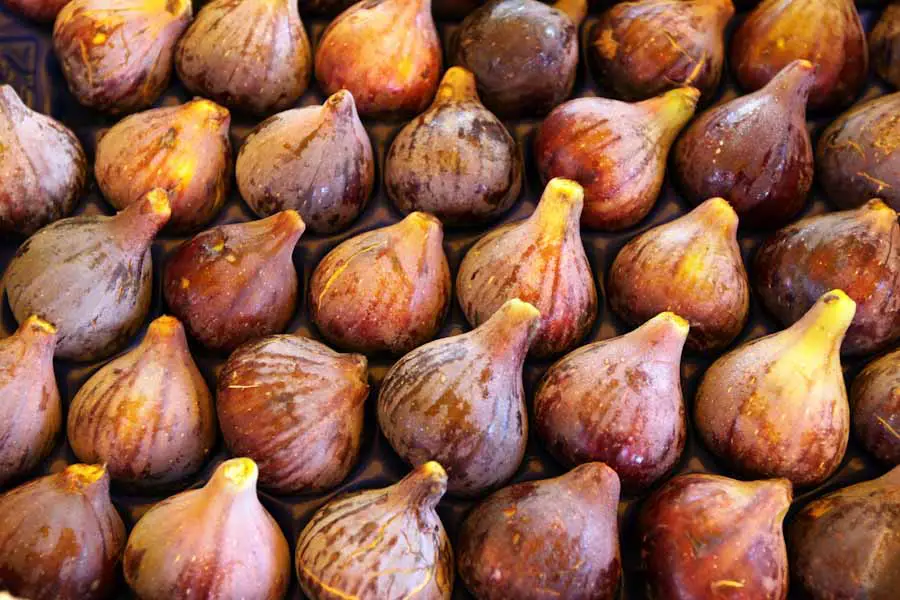
For more long-term storage, fresh figs can be frozen. Wash and dry the fruit carefully. Once the figs are fully dry, spread them on a tray in a single layer, then place in the freezer for a few hours until they are completely hard. Then, put the frozen individual figs in a freezer-safe bag and replace in the freezer. Frozen figs keep for about three months.
A Few Fig Questions
Why aren’t my figs ripening on the tree?
Figs may struggle to ripen due to environmental stress such as cold weather, drought, or lack of sunlight. An overly-laden fig tree may also cause the figs to not develop fully. The tree could also be too young to support the ripening fruit.
Fig trees need heat in order for the fruit to develop fully. If the weather is unseasonably cool, or if you live in a colder climate with short summers, there just may not be enough warmth for the figs to ripen.
A lack of water or sunlight could also keep the figs small and green. Fig trees need at least 6-8 hours of direct sun per day (they are Mediterranean plants, after all). They tolerate drought fairly well, but fig trees may need some supplemental watering during extended dry spells, especially as the fruit is developing.
Related: Where to Plant a Fig Tree: Location Matters
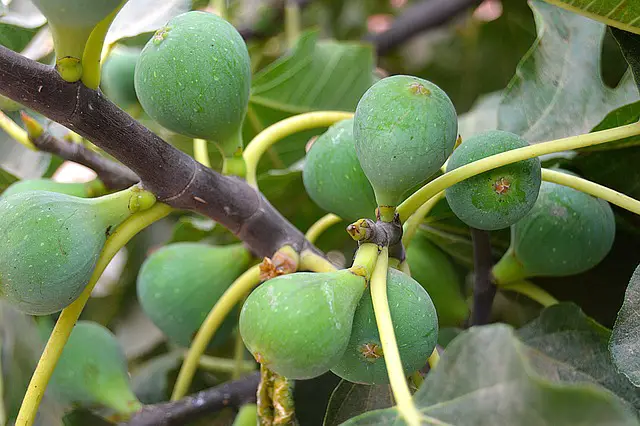
If a fig tree is bearing too many figs, it may struggle to allow them all to ripen. A simple thing you can do to speed along the ripening process is thin the fruit. Simply pinch off some of the figs, especially ones that are growing very close together, to allow the remaining fruit to mature to full size.
If your tree is young, it may not be ready to support a full crop of figs. Most fig trees need at least 3 to 5 years before they are ready to bear fruit to maturity. You may get a few figs on a young tree, but it’s better to let the tree grow and establish a healthy root system so you can have a bigger harvest in the future.
Learn more: The Lifespan of a Fig Tree: How Long Will It Bear Fruit?
Some fig growers use a pinching technique to encourage the fruit to ripen more quickly (there is some debate about how effective this is, but many people swear by it). When the new growth begins in the spring, simply pinch or trim off the ends of the new branches, keeping only 5 or 6 leaves on each new branch.
This will limit how many figs grow on the branches, as well as reducing the amount of new growth the tree has to support. Theoretically, the tree’s energy will then go toward developing the fruit, rather than continuing to send out new growth.
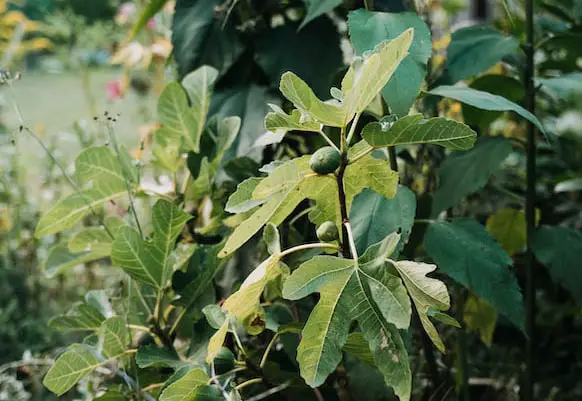
Full disclosure – I have not tried this, since I live in a hot climate with a long growing season. My figs have plenty of warm weather in which to ripen (although my hot, humid weather causes other issues!). It may be something worth trying, however, if you have short summers and your figs struggle to ripen by the end of the season.
Related: 11 Reasons Your Fig Tree Isn’t Fruiting (and What to Do)
Will figs continue to ripen if picked early?
In general, figs do not continue to ripen once they are removed from the tree. A small, hard, green fig will not soften if it is picked too soon. A fig picked in its final ripening stages (once it starts to change color and has reached full size) may soften somewhat, but it won’t get any sweeter once picked.
For the best possible flavor, leave figs on the tree as long as possible – just try to beat the birds!

